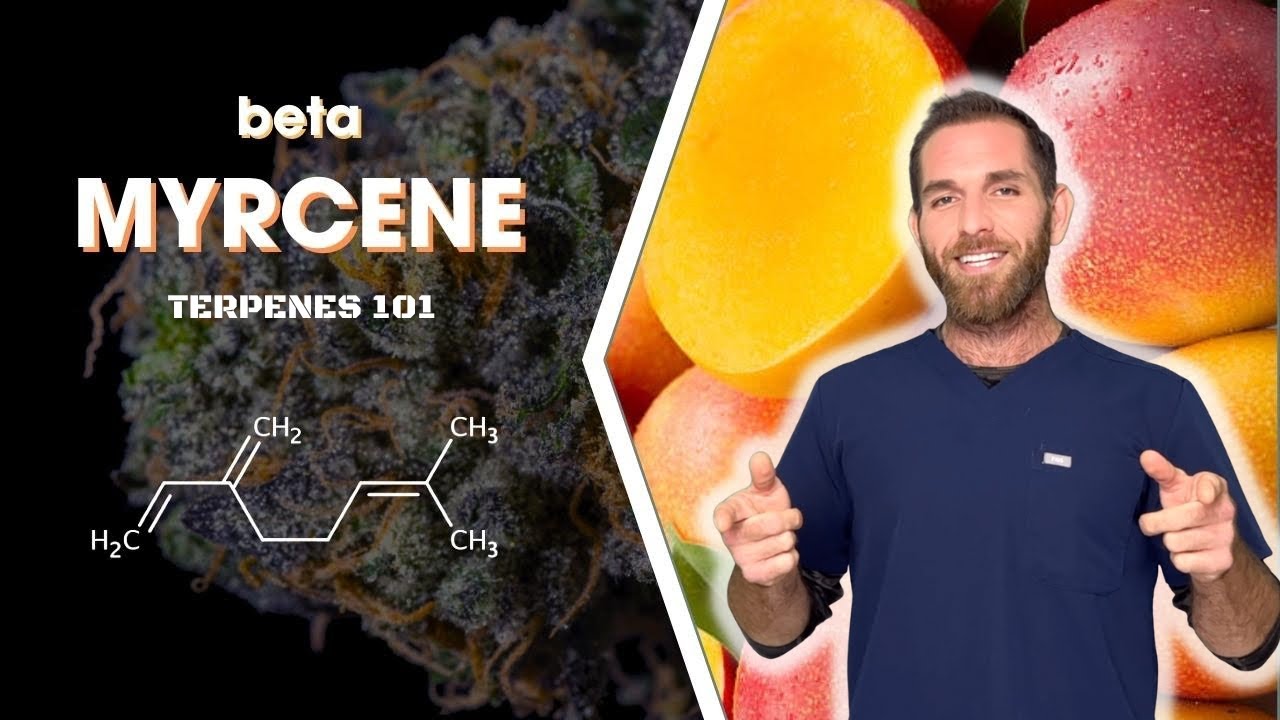Lets talk about beta-Myrcene:
(7-methyl-3-methylene-1,6-octadiene)
Myrcene Is an acyclic monoterpene,
it has a Molecular weight of 136.2 Da
Myrcene is one of the smallest terpenes, adding to its volatility
Its Boiling point is 166*C or 331*F /332.6 °F at 760 mmHg (USCG, 1999) 167 °C
Molecular Formula C10H16
Myrcene is the most commonly found terpene in modern cannabis in the united states and Europe. It also occurs naturally in a large number of other plant species, especially in the essential oils of plants such as Hops, mangoes, lemongrass, bay leaves, parsley, and thyme
Its odor has been described as PLEASANT and “herbaceous, earthy, balsamic, or green” or having a fresh hoppy smell. And it characteristically gives cannabis strains a mildly sweet flavor.
Myrcene is associated with the phenomenology of “couch-lock” commonly attributed to modern cannabis chemovars. This is not surprising once we realize that myrcene is one of the sedative agents of hops (Humulus lupulus)
its been suggested it is simply the amount of myrcene in the sample that will dictate how youll be feeling
for example, if a sample has over 0.5% myrcene, regardless of the other terps present, its labeled as an indica
while chemotypes with lower than 0.5% myrcene, this is less so and the other terps have a fighting chance to contribute
FYI, hemp products or products high in CBD also tend to be high in myrcene, which is why people are mislead into CBD being sedative. For example, The CANNATONIC from the flowery is a high CBD, low THC flower chemovar
https://theflowery.co/product/cannatonic-eighth
What are some of the therapeutic properties we possibly stand to gain from myrcene?
Anxiolytic or calming properties
Sedative properties/good for insomnia
Anti-inflammatory via prostaglandin E-2, while being gastroprotective
Shown to inhibit the inflammatory response induced by lipopolysaccharide, including cell migration and production of nitric oxide.
A significant inhibition of γ-interferon and interleukin (IL)-4 was also observed (106).
Analgesic or pain-relieving properties, which, was shown to be blocked by naloxone
Muscle relaxant properties
Anticonvulsant properties
Antioxidative properties
Antimicrobial properties (inherent to nature! Anti-fungal, anti-bacterial, sometimes anti-viral!)
MAY assist cannabinoids across the blood-brain barrier by increasing its permeability
(questionable, but more so a theory to help explain the entourage effect)
Interesting Facts:
Just like cannabis, It’s the most common terpene found in hops too
In brewing, β-myrcene is one of the most potent aromatic flavour components AND most odor-active volatile of hop essential oils
It constitutes as much as 70% of the essential oil by volume (14).
And clearly it can be the dominating terp in cannabis too.
There are a # of enzymes that produce myrcene as the sole end-product if GPP is the substrate or beginning product
Some of the genes responsible for producing myrcene are called terpene synthases
(specifically, the TPS-b clade of terpene synthases)
CsTPS3FN, CsTPS15CT, CsTPS5FN
And there are some enzymes that mostly produce myrcene but some others if a different substrate is used
https://www.cannadocsfl.com/
https://linktr.ee/cannadocsfl
source



